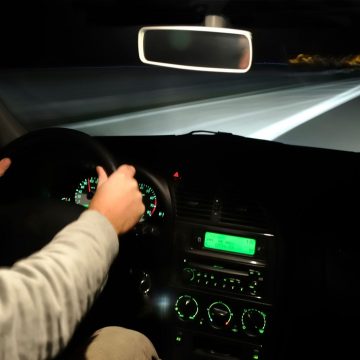
Navigating the Night: Enhancing Nighttime Driving for Older Adults
Driving at night can be daunting for older adults, often posing a significant challenge due to age-related changes in vision. Our ability to see in the dark diminishes as we age, making nighttime driving less safe. Today, we explore the reasons behind older adults’ struggles while driving at night and offer practical tips to maximize vision and enhance safety on the road.
Why We Struggle to See in the Dark as We Age
Reduced Pupil Size: As we grow older, the muscles controlling the size of our pupils become less efficient. This results in smaller pupils that let in less light, making it difficult to see in low-light conditions.
Decreased Visual Acuity: Aging can lead to a gradual decline in visual acuity, making it harder to perceive fine details in the dark. This is often compounded by the development of cataracts or other eye conditions that further diminish night vision.
Slower Adaptation to Darkness: Our eyes take longer to adjust to changes in light as we age. This means that when moving from a well-lit area to a darker one, older adults may experience temporary blindness or impaired vision until their eyes adapt.
Increased Sensitivity to Glare: Older eyes are more sensitive to glare from oncoming headlights, streetlights, or other sources of illumination. This glare can reduce visibility and cause discomfort.
Maximizing Vision for Safer Nighttime Driving
Regular Eye Examinations: Regular eye check-ups are essential for older adults. Comprehensive eye exams can detect and address common age-related eye conditions like cataracts, glaucoma, and macular degeneration that can impact night vision. Correcting these issues can significantly improve the ability to see in the dark.
Keep Windshields and Headlights Clean: Dirty windshields and headlights can scatter light and create glare, making it even harder to see at night. Regularly clean your vehicle’s exterior to minimize these distractions.
Optimal Headlight Use: Ensure that your headlights are working correctly and are correctly aimed. Use your headlights in low-beam mode to reduce glare for oncoming drivers. Avoid high beams unless necessary, as they can cause excessive glare and disorientation.
Reduce Speed: Slowing down while driving at night provides more time to react to unexpected obstacles and changes in road conditions, compensating for reduced vision.
Stay Hydrated: Dehydration can worsen dry eyes, leading to discomfort and reduced vision. Drink an adequate amount of water before embarking on nighttime journeys.
Use Anti-reflective Coatings: Consider investing in glasses with anti-reflective coatings. These coatings can minimize glare and increase visibility in low-light conditions.
Minimize Distractions: Avoid distractions inside the vehicle, such as adjusting the radio, using a cell phone, or eating. Concentrating solely on the road ahead can help you make better use of your remaining night vision.
Plan Your Routes: Familiarize yourself with the routes you’ll be taking before heading out at night. This can help reduce stress and anxiety, making it easier to navigate unfamiliar roads.
Stay Well-Rested: Fatigue can further diminish your ability to react quickly and make sound decisions. Prioritize getting a good night’s sleep before a long nighttime journey.
Consider Public Transportation or Ridesharing: Opt for public transportation or ridesharing services for nighttime travel. These options can reduce the need for nighttime driving, enhancing safety.
While aging may bring changes in night vision, older adults can take proactive steps to enhance their safety when driving after dark. Regular eye exams, proper vehicle maintenance, and attentive driving habits can greatly maximize vision and reduce the challenges associated with nighttime driving. By implementing these tips, older adults can continue enjoying the open road’s freedom while minimizing risks.

